Best European Red Wine Types
Brunello di Montalcino is a red Italian wine produced in the vineyards surrounding the town of Montalcino in the Tuscany wine region. Though it was initially considered to be made from a separate grape variety named Brunello, it was later discovered that the grape used in the production of the wine is in fact Sangiovese.
Regarded as one of the most renowned Italian wines, Brunello di Montalcino was awarded the designation of origin (DOCG), and it is produced with 100% Sangiovese grapes. At first, it comes off as juicy and spicy, with notes of oregano and balsamic, and it may develop strong aromas of cherry and leather.
Baga is a red grape variety mostly used in the Portuguese Bairrada appellation. This dark-skinned grape can produce wines of various characters, but until the 1980s, most producers used it for inexpensive bulk wines. When the approach and the techniques were adjusted, it was shown that Baga is able to produce excellent quality wines with great aromatic structure, good acidity, and firm tannins.
Baga wines are built for long aging and significantly benefit from the time spent in the bottle. The powerful tannins will tone down, and the aromas usually gain some elegance and complexity. Young Baga wines will have aromas of red berries and fruit, which may evolve into more complex expressions of tobacco, plums, and coffee.
This full-bodied, red wine is made from Nebbiolo grapes in a small area in Piedmont with a unique soil and climate conditions. It has been produced since the 19th century, and soon after its invention, it became a favorite among the Italian and European nobility.
According to Italian DOCG regulations, Barolo needs to matured for at least 36 months, while those aged for five years carry the prestigious Riserva label. It is a robust, but elegant wine, which is very high in tannins that soften with aging.
THE BEST Barolo Wine Appellations
Châteauneuf-du-Pape is the largest and the most important appellation in the southern part of the Rhône Valley that comprises of five communes. Most Châteauneuf-du-Pape wines are predominantly red blends, with a small percentage of whites.
Officially eighteen grape varieties are allowed, including different colors of the same grape variety. However, the most common are Grenache, Mourvèdre, Syrah, and Cinsault grapes. These rich wines can greatly differ in style, but they are mainly characterized by the spicy and earthy aromas of red berries, black pepper, tar, and leather.
THE BEST Châteauneuf-du-Pape Wine Appellations
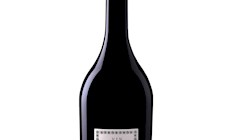
Domaine de la Solitude
2021 Châteauneuf-du-Pape Vin de la Solitude Red
James Suckling - 99 points 2024
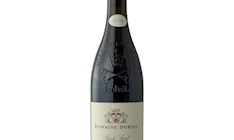
Naousa is a Greek appellation located in the region of Macedonia. The wines produced under the designation are made exclusively from Xynomavro—an indigenous Greek grape that is often compared to Pinot Noir and Nebbiolo. Naousa wines display the perfect balance of tannins, sugar, and acidity, while the typical aromas and flavors include a complex combination of savory notes that are often reminiscent of dark and red fruit, tomatoes, plums, earth, tobacco, herbs, and spices.
Naousa ages exceptionally well and is rarely enjoyed young. Because of its complexity and finesse, it is often cited as one of the finest Greek wines. An ideal pairing for this tannic wine is game, lamb, tomato-based sauces, rich stews, sausages, mushrooms, and aged cheese.
Burgundy is a world-famous French wine region that produces some of the best and most expensive wines in the world. Located in the east-central part of France, the area is dominated by Pinot Noir and Chardonnay. Other red and white grapes such as Aligoté, Pinot Gris, or Gamay are also used, but on a much lower scale.
Burgundy has more than 100 approved wine-growing areas, all regulated by a complex quality system that divides the region into grand cru, premier cru, village wines, and regional appellations. The wines are greatly influenced by terroir and show great diversity in flavors and aromas.
THE BEST Burgundy Wine Appellations
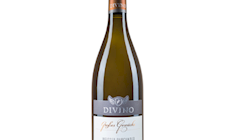
Ribera del Duero is a Spanish appellation located in several provinces of Castilla and Leon, in north-central Spain. The region is best known for big and bold varietals made with Tempranillo, also known as Tinto Fino or Tinta del Pais.
The blends have to include 75% Tempranillo, while other permitted varieties include Garnacha, white Albillo, and international varieties Malbec, Merlot, and Cabernet Sauvignon. Ribera del Duero wines are built to age. With time, they develop complexity and become more balanced.
Most of the wines are deeply colored, full-bodied, and well-structured with bright acidity and aromas of ripe fruit, vanilla, and spices. Aging requirements are similar to those in Rioja. Crianza is the youngest, aged for two years and 12 months in oak. Reserva labels are aged at least three years with at least 12 months in oak, and the Gran Reservas have to be aged for five years, including two years of oak aging.
Primitivo is an Italian grape variety with quite interesting origins. Research conducted in 1994 proved that the grape is identical to Californian Zinfandel, while it was later discovered that both grapes originated from an old and obscure Croatian grape Crljenak Kaštelanski.
Despite the same lineage, these grapes are influenced by their terroir, and they can slightly differ in character. In Italy, Primitivo is mostly cultivated in Apulia, where it is used in the appellation Primitivo di Manduria. Primitivo is a somewhat rustic wine, dark, intense, and rich in tannins that tend to mellow with age.
VARIATIONS OF Primitivo
MAIN INGREDIENTS
Barbera d’Asti (DOCG) is an Italian red wine produced on the hilly vineyards in the provinces of Asti and Alessandria in Piedmont. The minimum of 90% Barbera grapes must be used in its production, while the other 10% may be made up with Freisa, Grignolino or Dolcetto varieties.
The wines are mostly ruby red and well-balanced, with notes of red and black fruits, while Superiore varieties, which are aged for at least six months in wood, may have hints of spiciness. The wine pairs well with dark meat, mushrooms, matured cheese, and braised greens.
Saperavi is a resilient red Georgian grape that originated in the eastern region of Kakheti, and though it is still predominant in Georgia, small amounts are also grown in other Eastern European regions, Australia, and the United States.
This teinturier grape that has dark skins and flesh produces full-bodied wines of a dark garnet color which are characterized by aromas of ripe red berries and pleasant acidity. Most wines produced from the Saperavi grapes are varietal and have a great tendency to age.
Sapervai wines are incredibly versatile and can match a variety of dishes, including delicate fish dishes, stews, grilled meat, or game.
Best European Red Wine Producers
Established in 1820, Pereira D’Oliveira today is run by Anibal, Luis and Filipe D’Oliveira, the fifth generation of the family and the direct descendants of Joao Pereira d’Oliveira who founded the company. Their philosophy is to produce wines of the highest possible quality with experience acquired over two centuries of wine making.
Above all their aim is to produce wines of exceptional balance – powerful and textured with wonderful aromatic complexity, yet balanced by freshness.
AWARDS
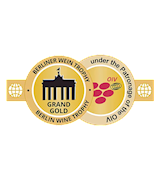
Berlin Wine Trophy - Grand Gold
2024, 2023, 2022, 2019, 2018
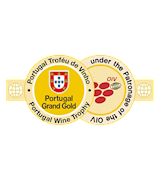
Portugal Wine Trophy - Grand Gold
2022
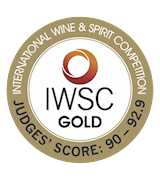
IWSC- International wine & spirit competition - Gold
2019
BEST Pereira d'Oliveira Vinhos Wines
Familia Torres is a prominent Spanish winery founded in 1870 by the Torres family in the Penedès region of Catalonia. Renowned for its commitment to quality and innovation, the winery produces a wide range of wines, including red, white, rosé, and sparkling wines, primarily using native grape varieties such as Tempranillo, Garnacha, and Parellada.
The Torres family emphasizes sustainable vineyard practices and has been a pioneer in organic and biodynamic farming. Their vineyards are located in various regions of Spain, including Penedès, Priorat, and Ribera del Duero, allowing them to craft wines that reflect the distinct terroir of each area.
AWARDS
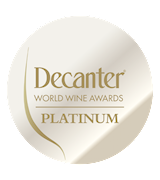
Decanter World Wine Awards - Platinum
2022, 2021, 2019, 2017

Decanter World Wine Awards - Best in Show
2021, 2020, 2019, 2016
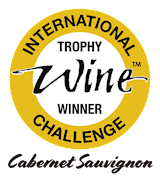
International Wine Challenge - International Cabernet Sauvignon Trophy
2017
BEST Familia Torres Wines
Weingut Ökonomierat Petgen-Dahm is a family-owned winery located in the picturesque region of Saar Valley, Germany. The winery has a long history, dating back several generations, and is known for producing high-quality wines that reflect the unique terroir of the area.
The estate specializes in Riesling, which is the flagship grape variety of the region, though they also produce a range of other white and red wines.
AWARDS

Berlin Wine Trophy - Grand Gold
2023, 2022, 2021, 2020, 2019, 2018
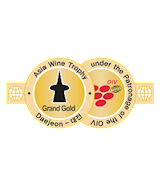
Asia Wine Trophy - Grand Gold
2017
BEST Weingut Ökonomierat Petgen-Dahm Wines
AWARDS

IWSC- International wine & spirit competition - Gold
2023, 2022, 2019
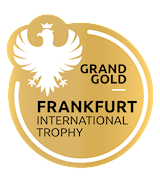
Frankfurt International Trophy - Grand Gold
2022, 2018, 2017
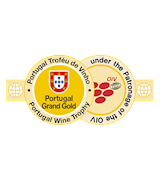
Portugal Wine Trophy - Grand Gold
2022, 2018
BEST Justino's Madeira Wines Wines
AWARDS

Berlin Wine Trophy - Grand Gold
2024, 2022, 2021
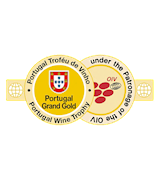
Portugal Wine Trophy - Grand Gold
2023, 2022, 2017

Asia Wine Trophy - Grand Gold
2019, 2017
BEST Weingut Keringer Wines
AWARDS

Frankfurt International Trophy - Grand Gold
2023, 2022, 2019, 2018
BEST Les Grands Vins de Pazac Wines
As brothers, we complemented each other very well even as children, despite our different interests and talents. This is still the case today and we can contribute to the success of our family winery with our know-how on various levels: We enjoy working together in our vineyards, Hans Michael bears great responsibility for the style and expressiveness of our wines in the cellar and Andreas is responsible for sales and presence at tastings.
We stand for stability, handshake quality, family history, but also for a new perspective on the whole - and the naturalness among brothers to always challenge each other with respect and to develop new things together.
AWARDS
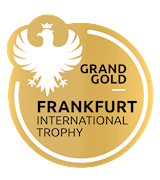
Frankfurt International Trophy - Grand Gold
2024, 2019
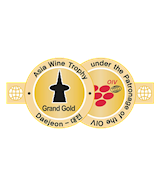
Asia Wine Trophy - Grand Gold
2023, 2020

Berlin Wine Trophy - Grand Gold
2023, 2018
BEST Gebrüder Nittnaus Gols Wines
AWARDS

USA Wine Ratings - Gold
2023, 2022, 2021

Berlin Wine Trophy - Grand Gold
2023, 2022, 2020, 2019

Frankfurt International Trophy - Grand Gold
2023, 2022, 2021, 2019
AWARDS
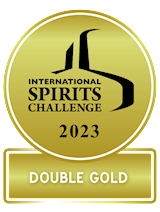
ISC-International Spirits Challenge - Double Gold
2023

IWSC- International wine & spirit competition - Gold
2024, 2023, 2022, 2021, 2019

The World Whiskey Masters - Gold
2023
BEST González Byass Spirits
Best European Red Wines
Château d'Armailhac 2006 is a red wine from the Pauillac appellation in Bordeaux, reflecting the characteristics of its vintage and terroir. This wine is crafted from a blend of 64% Cabernet Sauvignon, 20% Merlot, 15% Cabernet Franc, and 1% Petit Verdot.
The 2006 vintage was marked by warm and dry conditions, with above-average temperatures in June, July, and September, allowing the grapes to reach optimal ripeness. The wine exhibits a deep red color. On the nose, it reveals aromas of ripe red fruits, with subtle hints of smoke and vanilla.
AWARDS

Berlin Wine Trophy - Grand Gold
2022
AWARDS
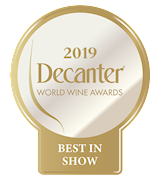
Decanter World Wine Awards - Best in Show
2021, 2020, 2019
MASSIV RED Toprotweincuvée is a bold and powerful red wine that blends several carefully selected grape varieties. This wine is known for its deep, rich color and intense aromas of dark fruits, such as blackberries and cherries, along with hints of spice and earthy undertones.
On the palate, it offers a full-bodied experience with structured tannins and a smooth, long finish. The combination of ripe fruit flavors and a well-integrated acidity gives this wine a balanced, yet robust character. Perfect for pairing with hearty dishes, MASSIV RED is a wine that stands out for its strength and complexity.
AWARDS

Berlin Wine Trophy - Grand Gold
2024, 2022, 2021

Portugal Wine Trophy - Grand Gold
2022
Gusbourne Estate Pinot Noir 2016 is a sophisticated and expressive English red wine, showcasing the potential of cool-climate viticulture in Kent, England. Crafted from carefully selected Pinot Noir grapes grown in Gusbourne’s estate vineyards, this wine reflects the winery’s commitment to quality and terroir-driven winemaking.
In the glass, it presents a vibrant ruby-red color with brilliant clarity. The nose is elegant and layered, offering aromas of red cherries, raspberries, and wild strawberries, intertwined with subtle hints of spice, earth, and toasted oak from careful barrel aging.
AWARDS
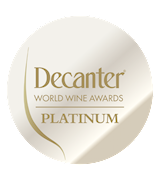
Decanter World Wine Awards - Platinum
2017, 2016
AWARDS

Frankfurt International Trophy - Grand Gold
2023, 2019, 2018
Even from barrel the seamless 1989 La Mission revealed a special elixir aspect, tasting like it had been designed by Chanel. It still possesses a blue/purple color with only a hint of garnet creeping in, and the explosive aromatics offer up notes of licorice, creme de cassis, blueberry liqueur, smoky barbecue meats, truffles and graphite.
If that’s not enough to get one salivating, the palate has never disappointed either. Full-bodied with extraordinary opulence as well as sweet, well-integrated, velvety tannins, this fresh, lively, blockbuster La Mission appears to be one of those rare wines that never goes through a closed, unfriendly stage.
AWARDS
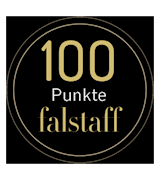
Falstaff - 100
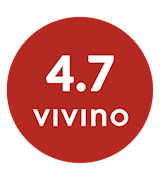
Vivino - 4.7
AWARDS

Falstaff - 100

Vivino - 4.8
AWARDS

Berlin Wine Trophy - Grand Gold
2024
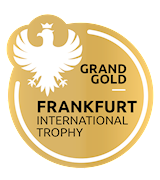
Frankfurt International Trophy - Grand Gold
2022
Restrito Grande Escolha 2014, is today the ultimate exponent of our passion. In years when, together with the winemaker, we believe that the harvest has the best characteristics, we place the wine in French oak barrels for an 18-month aging period.
The result of successive editions of Grande Escolha has revealed that our choices have been successful. These are wines that have received the greatest and best distinctions and criticisms.
AWARDS

Frankfurt International Trophy - Grand Gold
2018

Concours Mondial de Bruxelles - Grande Médaille d'or
2019
AWARDS

Frankfurt International Trophy - Grand Gold
2019, 2017
TasteAtlas food rankings are based on the ratings of the TasteAtlas audience, with a series of mechanisms that recognize real users and that ignore bot, nationalist or local patriotic ratings, and give additional value to the ratings of users that the system recognizes as knowledgeable. For the “Top 100 European Red Wines” list until April 10, 2025, 3,659 ratings were recorded, of which 2,514 were recognized by the system as legitimate. TasteAtlas Rankings should not be seen as the final global conclusion about food. Their purpose is to promote excellent local foods, instill pride in traditional dishes, and arouse curiosity about dishes you haven’t tried.




































































































































































































































































